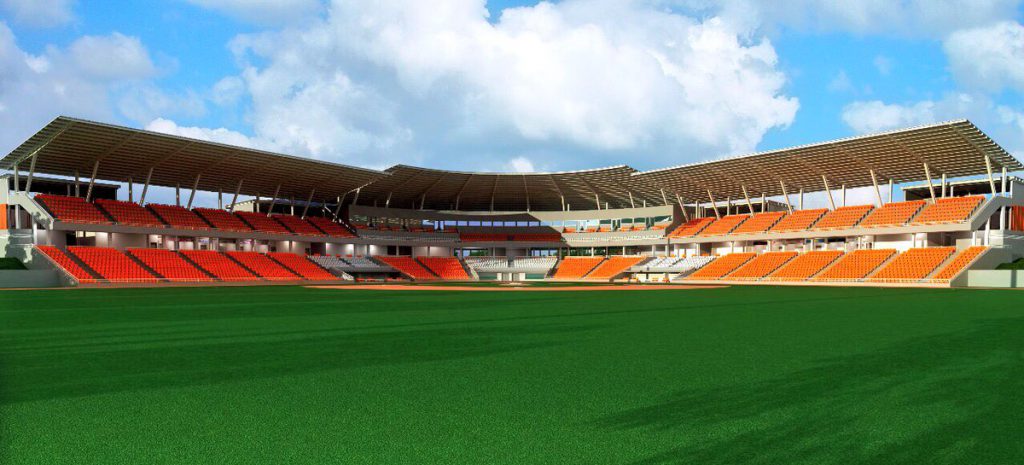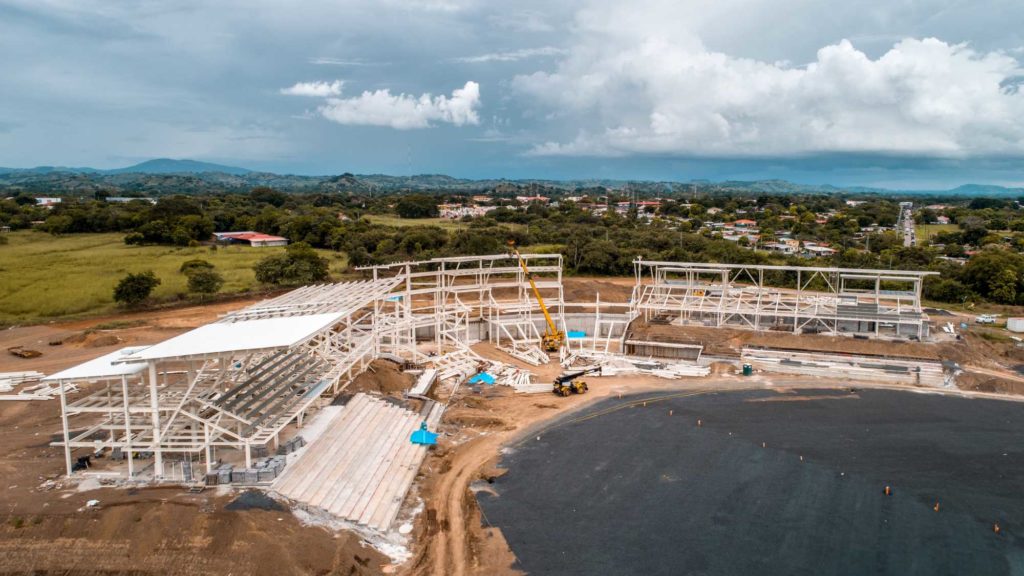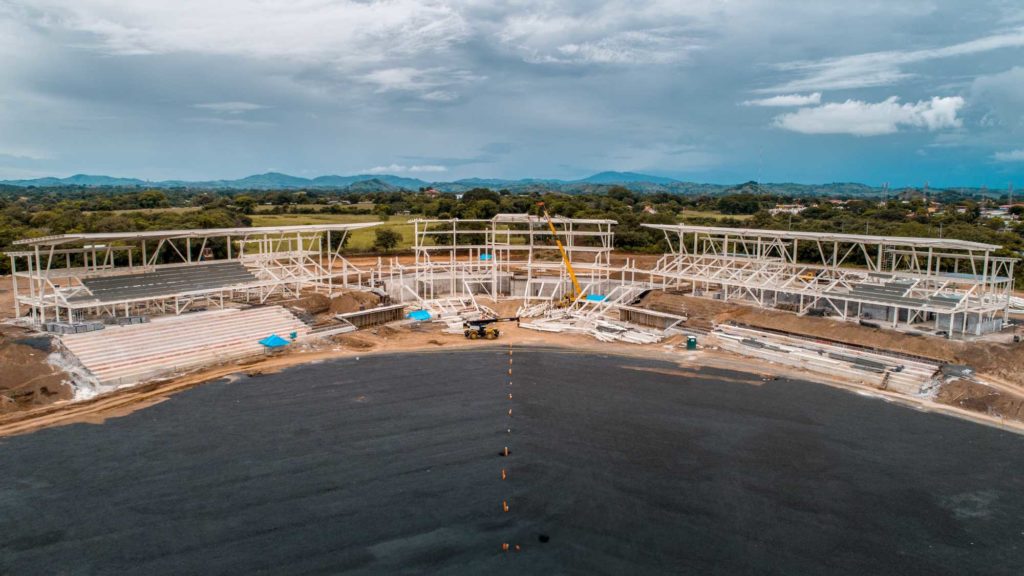Whether you are the owner of a health and wellness center, a club manager, community leader, a developer, or an entrepreneur, if your next task or mission is to build a new stadium – you have come to the right place! Our team of engineers becomes an extension to your team to value engineer any project.
Over the years, we’ve learned a few things from our partners, building a stadium is a long and complicated process. There are a number of factors that need to be considered to make sure the stadium has all the modern features and amenities as well as lives up to the expectations of modern day spectators. In this article, we’ll share some important things to consider before starting your project.
First Things First – Identify Your Needs and Goals
Outlining your needs and goals should be the first thing to do as soon as you decide to build a stadium. Who are you building the stadium for? Is it for students of elementary school or high school club teams? Or is it going to be for professional players?
What activities do you want to provide? Is it going to be dedicated only to one sport or you want to build a multi-purpose stadium?
These questions will help you determine the features and amenities you should provide in the stadium. The needs of school students are different from the needs of professional players. Similarly, you will have to provide additional safety features if you are going to serve small children.

Understand and Plan the Process of Development
As mentioned earlier, building a stadium is a complicated process that requires the involvement of a number of experts and skilled professionals; architects, developers, engineers, technicians, consultants, financial advisors, business analysts, and legal experts, to name a few.
It is highly important that you take time to understand and plan the entire development process before you actually begin the work. Also, it is highly important to have a roadmap highlighting all the key stages, milestones, finances, timeline, and the people or authorities that will be involved in the project. Identify the key stakeholders and discuss your vision and goals with them at the initial stage to avoid any confusion or problem, during the later stages. All these things will help with the timely completion of the project without exceeding your budget or compromising on your requirements and goals.
Assess the Construction Site
There are a number of things that need to be considered to determine if a site is fit for the stadium construction. Here a few essential things you should consider:
- Does the government allow construction of a stadium at the site you are considering? Check out the zoning and urban planning regulations.
- How’s the location? It it a place that people can find and reach easily? Is it easily accessible through public transport? Will you be able to provide parking space to the visitors? If not, then is there public parking nearby?
- Will there be any difficulty or extra cost for transporting the construction material to the site? If yes, then will you be able to manage it within your set budget?
While the size requirements vary according to the nature of a project, make sure to find out if there is any minimum size requirement set by the local government bodies.
Market Research and Analysis
One of the most important stages of the planning process, market research and analysis, or feasibility study, helps to identify the competition, gap between supply and demand, financial capacity and spending habits of the fan base (how much people can afford or are willing to spend?), and a variety of social, economic, political and technological factors that can affect the development, maintenance, or functioning of the stadium.
Surveys are a good way to identify the behavioral patterns of your target audience. Interviews of community leaders may also provide an insight into buyers’ preferences, requirements, and habits.
An analysis of the competitors will enable you to make your project stand out by filling in the gap between supply and demand.
Market analysis will also help you identify the multi-use potential of the stadium – can you consider using the stadium for other purposes? Will it be a plausible option considering the higher capital costs of such stadiums?
All these factors are crucial to the conceptualization and successful implementation of your stadium project.

Financial Analysis
The next step in the stadium development project should be to conduct an in-depth financial analysis. Identify all the costs related to the construction, operation, and maintenance of the project and the average revenue it is expected to generate. The operating cost should include everything from cleaning, repair, security, wages of staff members, marketing for various sports and non-sports events, and taxes you will be required to pay. Similarly, revenue estimation should include the money earned through tickets, parking, different foods and beverage outlets, sponsorships, non-sports events, and any other facilities, such as the hospitality areas, that stadium is going to have.
Financial analysis is highly important because it helps to evaluate the profit and loss, which then will help to devise a plan for maintaining the cash flow, at least for the first few years.
Risk Analysis
Risk analysis prepares all the stakeholders for any event or incident that may affect the success of the project. An identification of the possible risks also enables you to come up with a risk management plan in order to reduce or limit the impact of any unfavorable event on the stadium’s operations.
Some of the risks associated with a stadium development project are:
- Rise of new competitors and target markets.
- Unexpected financial instability of one or more of the project investors.
- Poor performances of popular teams as it will have a direct impact on the number of spectators.
- Anything that negatively affects the macroeconomic factors.
Know All the Regulations
Depending on the nature of your project, you will have to follow the regulations set by all the relevant authorities, such as the planning codes of your area, any design, infrastructure, or security requirements set by your state, regional, and international authorities, like FIFA in case of football stadium.
Turnings Concepts into Design
Now is the time to convert all your ideas and concepts into drawings and other visualizations to create an image of the stadium. This will also help to figure out any difficulties in the implementation of an idea as well as help you develop a character of the stadium.
Lay out a detailed structural design with stands, shell, and the geometry of the stadium. The size of the stadium, capacity, and the types of events that are going to be held are crucial factors in finalizing the geometry of the stadium.

Different design elements, materials, and colors can help you reflect the culture of your community or city as well as help you create a unique identity and atmosphere.
Apply for a Permit
You will need to get construction permit from local authorities. For this, you will need to provide them the detailed drawings of the stadium design and features. The authorities may ask you make some changes in the design, if anything clashes with the local laws, codes, and regulations. You cannot begin construction until you have the permit. Let us help you get started with our design services package.
Find the Right Contractor
Contractor selection is a big task. A reputable contractor may cost you more, but it’s worth paying a few extra bucks than putting your dream project at stake. However, hiring an experienced and reputable contractor does not mean that you no longer need to be involved in the construction. You should be involved at every step.
Specialists and Experts Needed For Stadium Development Project
A stadium development project requires the involvement of a host of skilled professionals, engineers, experts, consultants, and advisors. Some of the experts you need are:
-
- Architectural designers
- Landscape architects
- Structural engineers
- Electrical engineers
- Sound and lighting engineers
- Plumbers
- Traffic planners
- Interior designers
- Financial advisors
- Legal experts
- An experienced and a trustworthy project manager
Bottom Line
As stated earlier, building a stadium is an extensive project that requires a large amount of time and energy. Here, we have highlighted some major stages of a stadium construction project. Count on us to be your trusted structural design partners.
